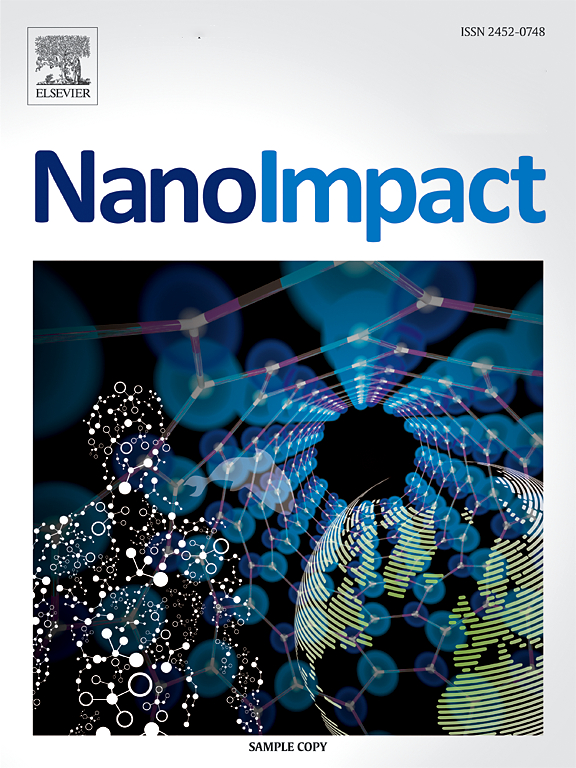Nano-sized polystyrene plastics toxicity: Necroptosis pathway caused by autophagy blockade and lysosomal dysfunction
IF 5.5
3区 环境科学与生态学
Q2 ENVIRONMENTAL SCIENCES
引用次数: 0
Abstract
The persistent detection of nano-sized plastic particles in humans, animals, and animal-derived products underscores the potential impact of these particles on living organisms. Consequently, the toxicology of such particles has emerged as a pivotal research interests in recent years. In this study, NP was synthesized successfully with an average particle size of 100 nm using a emulsion polymerization method as model particles. Following co-incubation of IEC-6 cells with NP for 24–168 h, a notable inhibition of cell viability and proliferation was observed. The significant activation of autophagy and a concomitant blockage of autophagic flux in IEC-6 cells after 24–72 h of co-incubation with NP were unveiled by transmission electron microscopy, western blotting, and double-fluorescent autophagy analysis. A significant increase in the number of lysosomes and an increase in the expression of hydrolase CTSB were detected, indicating dysregulation of lysosomal function. The subsequent transcriptomic and metabolomics analyses, coupled with the observation of activated lysosomes and the RIPK1-RIPK3-MLKL/PYGL pathway, led us to posit that the blockade of autophagy and lysosomal dysfunction, culminating in lysosomal membrane permeabilization (LMP) induced necroptosis, constitutes one of the mechanisms contributing to the cytotoxicity of NP.
Synopsis
The cytotoxicity and its related mechanisms of nano-plastic is still unclear. This study found that nano-plastics may induce necroptosis in cells, and autophagy blockade and lysosomal dysfunction are prodromal manifestations.
纳米聚苯乙烯塑料毒性:自噬阻断和溶酶体功能障碍引起的坏死坏死途径。
在人类、动物和动物衍生产品中持续检测到纳米级塑料颗粒,强调了这些颗粒对生物体的潜在影响。因此,近年来,这些颗粒的毒理学已成为一个关键的研究兴趣。本研究以乳液聚合法为模型粒子成功合成了平均粒径为100 nm的NP。IEC-6细胞与NP共孵育24-168 h后,观察到细胞活力和增殖受到明显抑制。透射电镜、western blotting和双荧光自噬分析显示,与NP共孵育24-72 h后,IEC-6细胞的自噬明显激活,自噬通量阻滞。检测到溶酶体数量显著增加,水解酶CTSB表达增加,表明溶酶体功能失调。随后的转录组学和代谢组学分析,加上对活化溶酶体和RIPK1-RIPK3-MLKL/PYGL通路的观察,使我们假设自噬和溶酶体功能障碍的阻断,最终导致溶酶体膜透性(LMP)诱导的坏死坏死,是促成NP细胞毒性的机制之一。摘要:纳米塑料的细胞毒性及其相关机制尚不清楚。本研究发现纳米塑料可诱导细胞坏死,自噬阻断和溶酶体功能障碍是前驱症状。
本文章由计算机程序翻译,如有差异,请以英文原文为准。
求助全文
约1分钟内获得全文
求助全文
来源期刊

NanoImpact
Social Sciences-Safety Research
CiteScore
11.00
自引率
6.10%
发文量
69
审稿时长
23 days
期刊介绍:
NanoImpact is a multidisciplinary journal that focuses on nanosafety research and areas related to the impacts of manufactured nanomaterials on human and environmental systems and the behavior of nanomaterials in these systems.
 求助内容:
求助内容: 应助结果提醒方式:
应助结果提醒方式:


